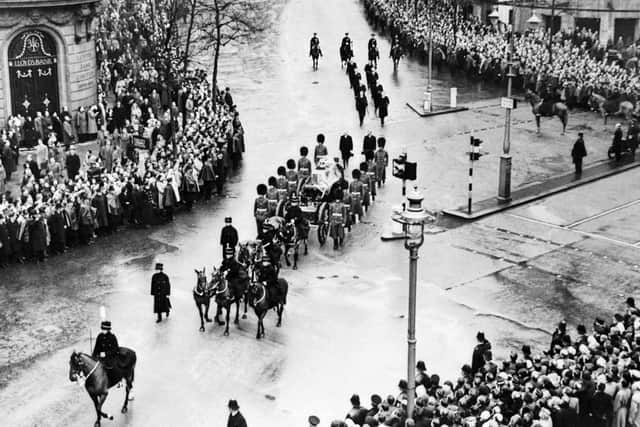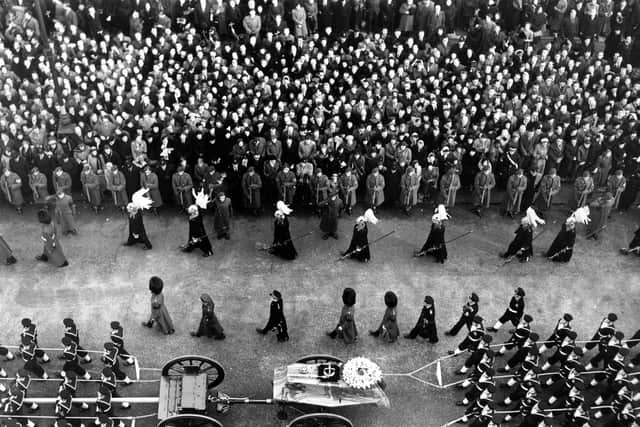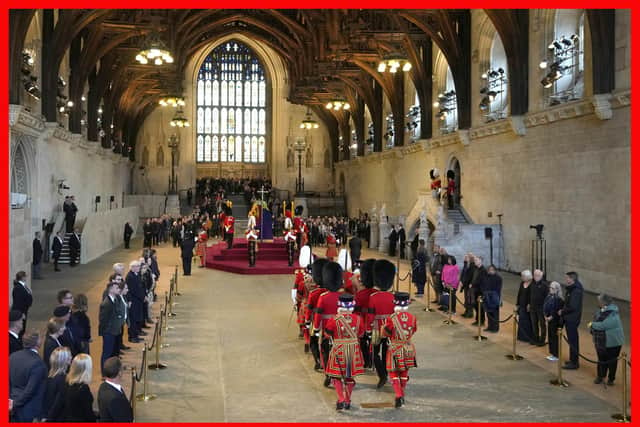Queen Elizabeth II death: Shades of 1952 as London lays-in-wait for Monday's state funeral
Despite their reigns spanning different centuries and their deaths coming 70 years apart, public interest in paying respect to the UK monarch following their death seems anything but diminished.
Yesterday afternoon, the queue to see the Queen’s coffin was paused at 11:35am for 40 minutes, with the public warned they faced a 14-hour wait to enter Westminster Hall. The queue had reached five miles long by this point, a mile longer than that for George VI.
Advertisement
Hide AdAdvertisement
Hide AdBy 5pm, the queue extended from Westminster back into Bermondsey, with the wait time extended to 24 hours. Fresh estimates suggested around one million people will have paid their respects to the Queen by the end of the period of lying-in-state on Monday.
Writer Damon Smith described his ten-hour wait to see the Queen yesterday as a “defiant act of remembrance” that left him tearful. His aching body would be soothed with a bath of Epsom salts once home. His lingering sadness and appreciation would be harder to treat, he said.
Back in 1952, one Londoner shared his thoughts on why he waited 12 hours in wintry conditions to see the King lay in Westminster Hall.
"Well it’s the King, ain’t it? Wouldn’t do it for anyone else, mind you,” the mourner said.


While tourists may count for a portion of the 2022 ‘Great Queue’ and ease of travel draws in large numbers from around the country and beyond, the numbers of those wishing to view Elizabeth II coffin has far exceeded expectations.
In 1952, the wait for the King’s coffin gave way to packed London streets as the funeral procession got underway, with the Daily Telegraph then reporting two million people lined the capital streets on February 15 for a glimpse of the elaborate cortege.
Interest in the state funeral was reportedly down when compared to the public show for George V, partly due to his son’s funeral procession being shown on television, the first broadcast of its kind. Today, YouTube and Twitter are sharing updates on the mourning period.


On Monday, Elizabeth II’s coffin will be transported from Westminster Hall to Westminster Abbey on the state gun carriage, which also transported her father.
Advertisement
Hide AdAdvertisement
Hide AdThe procession for George VI headed to Paddington Station for the Royal Train to Windsor. A service was held at St George's Chapel in Windsor Castle before the king was interred in the royal vault.
On Monday, more than 2,000 people will attend Elizabeth II’s funeral service at Westminster Abbey. A procession will then begin to Wellington Arch, with King Charles leading members of the royal family on foot behind the gun carriage.
The Queen’s coffin will then be transferred to the state hearse and travel by road to Windsor. The committal service, attended by 800 people, will be held at St George’s Chapel.


Later that evening her family will attend a private interment service, where the Queen will be buried alongside her father at King George VI memorial chapel. The body of her late husband, Prince Philip, will also be moved to join her there.
Comments
Want to join the conversation? Please or to comment on this article.
